Astragaloside III
- CAS NO.:84687-42-3
- Empirical Formula: C41H68O14
- Molecular Weight: 784.97
- MDL number: MFCD28978172
- SAFETY DATA SHEET (SDS)
- Update Date: 2025-12-20 21:15:22
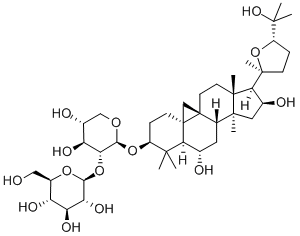
What is Astragaloside III?
Description
Astragaloside III is a saponin first isolated from the dried plant roots of the genus Astragalus, which is used in traditional Chinese medicine. It is bioavailable after oral administration, distributed mainly to the thymus and spleen, and has a half-life of approximately 2 hours.
The Uses of Astragaloside III
Astragaloside III has cardioprotective effects as well as causing improvement in cognitive function. Used in the prevention of cardio-cerebral vascular diseases. Antioxidant.
Definition
ChEBI: A triterpenoid saponin that is cycloastragenol with a 2-O-beta-D-glucopyranosyl-beta-D-xylopyranosyl moiety attached at position 3 via a glycosidic linkage.
Benefits
Astragaloside III is a natural compound from Astragalus that has been shown to have immunomodulatory effects in various systems. Astragaloside III significantly elevated the expression of natural killer group 2D (NKG2D), Fas, and interferon-γ (IFN-γ) production in NK cells, increasing tumor-killing ability. It could effectively impede tumour growth by increasing the infiltration of NK cells into the tumour and upregulating the antitumor response of NK cells. In addition, Astragaloside III increased IFN-γ secretion of NK cells by enhancing the expression of transcription factor T-bet. In conclusion, the effective antitumor function of Astragaloside III was achieved through up-regulation of the immune response of NK cells and elevation of NKG2D, Fas, and IFN-γ production[2].
Biological Activity
Astragaloside III exhibited the highest interaction energy value of -8.718 kcal/mol and -8.447 kcal/mol against envelope and NS2b/NS3 targets, respectively. Astragaloside IV exhibited -7.244 kcal/mol against the SAM site and -9.179 kcal/mol against the RNA cap site of NS5 targets. In silico ADMET analysis revealed that astragaloside II, III, and IV were non-mutagenic and non-carcinogenic, and these compounds were also non-toxic to Vero cells up to 1000 μg/mL. Against dengue virus serotype 3, astragaloside II exhibited substantial antiviral activity at the concentration of 1.56 μg/mL, followed by astragaloside III at 6.25 μg/mL and astragaloside IV at 12.5 μg/mL. Also, against dengue serotype 1, astragaloside II showed the maximum antiviral activity at 1.56 μg/mL, followed by astragaloside III and IV at 3.125 μg/mL[1].
Side Effects
However, minor side effects have been reported in studies, such as a rash, itching, runny nose, nausea and diarrhea. When given by IV, astragalus may have more severe side effects, such as irregular heartbeat. It should only be administered by IV or injection under medical supervision.
References
[1] Purushothaman Indu M.Sc . “Antiviral activity of astragaloside II, astragaloside III and astragaloside IV compounds against dengue virus: Computational docking and in vitro studies.” Microbial pathogenesis 152 (2021): Article 104563.
[2] Xingmeng Chen. “Astragaloside III Enhances Anti-Tumor Response of NK Cells by Elevating NKG2D and IFN-γ.” Frontiers in Pharmacology (2019).
Properties of Astragaloside III
| Melting point: | 245~247℃ |
| Boiling point: | 906.8±65.0 °C(Predicted) |
| Density | 1.39±0.1 g/cm3(Predicted) |
| storage temp. | Hygroscopic, -20°C Freezer, Under inert atmosphere |
| solubility | Methanol (Slightly), Pyridine (Slightly) |
| form | Solid |
| pka | 12.89±0.70(Predicted) |
| color | White to Off-White |
Safety information for Astragaloside III
Computed Descriptors for Astragaloside III
| InChIKey | FVFSMBDVZVUETN-HCAUMGIPNA-N |
New Products
Indole Methyl Resin tert-butyl 9-methoxy-3-azaspiro[5.5]undecane-3-carboxylate Boc-His(Boc)-OH 2-CTC Resin 4-Chloro-7-tosy1-7Hpyrrolo[2,3-d]pyrimidine 5,7-Dibromo-1H-indole 2,5-dichloro-N-hydroxy-4,6-dimethylpyridine-3-carboximidamide 2,2-Dimethoxy-7-azaspiro[3.5]nonane hydrochloride 4-chloromethyl-5-methyl-1,3-dioxol-2-one (DMDO-Cl) R-2-BENZYLOXY PROPIONIC ACID 1,1’-CARBONYLDIIMIDAZOLE 1,1’-CARBONYLDI (1,2-4 TRIAZOLE) N-METHYL INDAZOLE-3-CARBOXYLIC ACID 4-((2-hydroxyethyl)thio)benzoic acid 1-(TERT-BUTOXYCARBONYL)-2-PYRROLIDINONE Methyl 6-methylnicotinate 3-Pyridineacrylic acid tert-Butyl carbazate TETRAHYDRO-2H-PYRAN-3-OL 2-((4-morpholinophenylamino) (methylthio) methylene) malononitrile 3-(4-morpholinophenylamino)-5-amino-1H-pyrazole-4-carbonitrile 2,4-dihydroxybenzaldehyde 1,3-Diethyl-1,3-Diphenylurea Methyl 2-methylquinoline-6-carboxylateRelated products of tetrahydrofuran
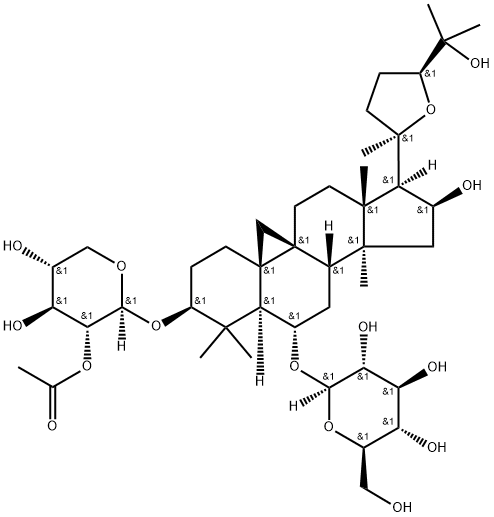
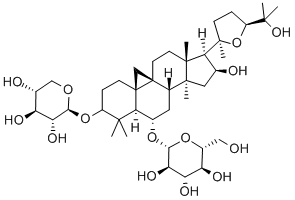
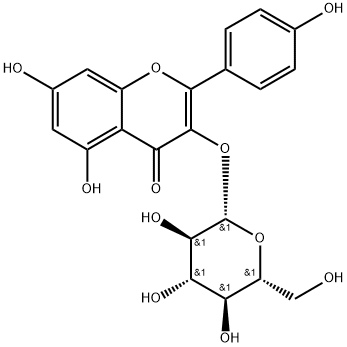
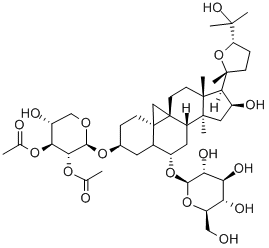
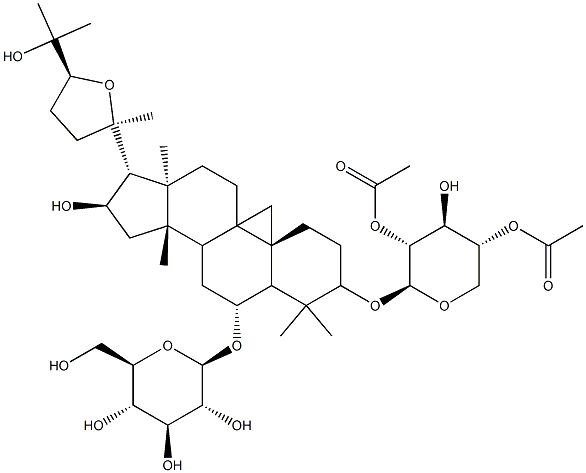
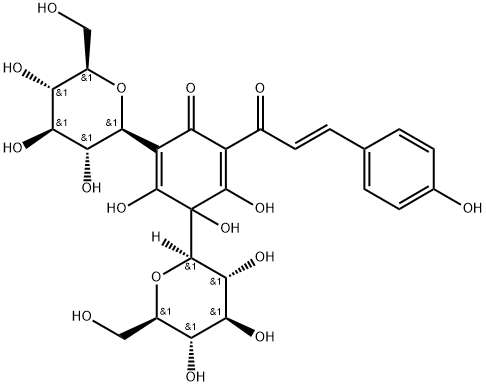


You may like
-
 Pyridine 99.5% HPLC /UV SpectroscopyView Details
Pyridine 99.5% HPLC /UV SpectroscopyView Details
110-86-1 -
 Guanine , 99%View Details
Guanine , 99%View Details
73-40-5 -
 Piperazine Spot supply, best priceView Details
Piperazine Spot supply, best priceView Details
110-85-0 -
 Potassium Hydroxide 90%View Details
Potassium Hydroxide 90%View Details
1310-58-3 -
 Dibutyl PhthalateView Details
Dibutyl PhthalateView Details
84-74-2 -
 Imidazole Spot supply, competitive priceView Details
Imidazole Spot supply, competitive priceView Details
288-32-4 -
 Octadecyl 3-(3,5-di-tert-butyl-4-hydroxyphenyl)propionate 98% (GC)View Details
Octadecyl 3-(3,5-di-tert-butyl-4-hydroxyphenyl)propionate 98% (GC)View Details
2082-79-3 -
 Thiourea 99% ARView Details
Thiourea 99% ARView Details
62-56-6
